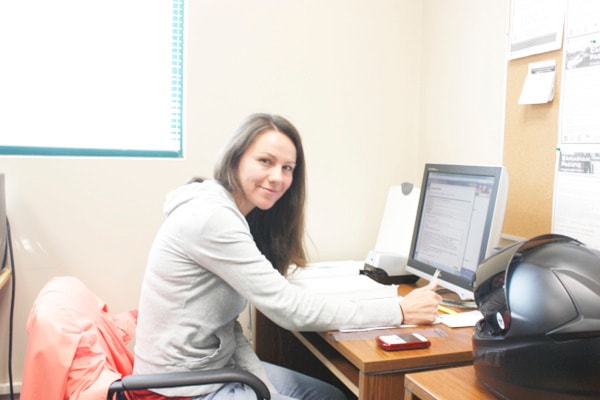Okanagan College’s booming aboriginal population is generally happy with the institution, but wants to see more culturally-relevant events on campus, according to fresh data from the school’s First Nations satisfaction survey.
While 86 per cent of those surveyed confirmed they’d had a good experience at the college, 83 per cent expressed a desire for more aboriginal-focused events.
“We feel really at home when we see other native people. It makes us feel more comfortable, more confident in our classes,” said Aboriginal Student Club president Kacheena Naytowhow.
“To have more events would make us feel more comfortable on campus to have more people involved, and not only that, but inviting people to learn more about our culture and who we are.”
The annual survey received responses from 100 aboriginal learners at the college, which, over the past six years, has seen that segment of its student body grow from 445 to 1,345 people, the fastest growth rate of any public post-secondary institution in B.C.
James Coble, an aboriginal access and service co-ordinator with the college, said this growth could be attributed to the growing aboriginal population, as well as greater high-school graduation rates for First Nations people.
Naytowhow said catering more to First Nations could also help remedy one of the largest issues facing aboriginal students: a relatively poor retention rate.
While the retention rate does show how many students are staying at the college, the rate isn’t a good indication of students reaching personal success, said Russ Winslade, director of student services at Okanagan College. Often, he said, different circumstances have individuals setting different personal goals, such as simply taking one or two classes to completion.
Regardless, the OC study highlights a number of factors that drag down the retention rate, including parenthood.
Sixty per cent of those surveyed have at least one child, and 36 per cent don’t have access to child care.
“Having a child and attending school is difficult because we encounter more costs,” Naytowhow said. “More costs, more responsibility, more juggling. A lot of First Nations students will have kids, that’s a struggle.”
The college has already introduced a number of programs and ways to provide support for aboriginal students — peer-mentors, aboriginal support centres, meeting places and aboriginal events — which Naytowhow said were effective at making aboriginal students welcome.
However, the college is still taking actions to further assist the students.
To help the school’s First Nations students face their different barriers, as well as help them navigate the complicating realm of post-secondary schooling, the college has created a new position: aboriginal transitional planners.
The role, introduced two weeks ago after several months of planning, is in place to help aboriginal people from the first day they are recruited to their last day at the college, said Winslade. The planners are involved in First Nations recruiting, entrance advising, mentoring and events planning — an area that, according to the survey, aboriginal students want to see more of.
Coble said he has tried to step up aboriginal-focused offerings as a result of past survey results, providing things like luncheons and potlatches through the aboriginal support centres.
“Usually, the surveys come back with great responses,” Coble said. “We’ve never had any issues in terms of students saying we’re not meeting their needs, so we haven’t had to address that very much.”
